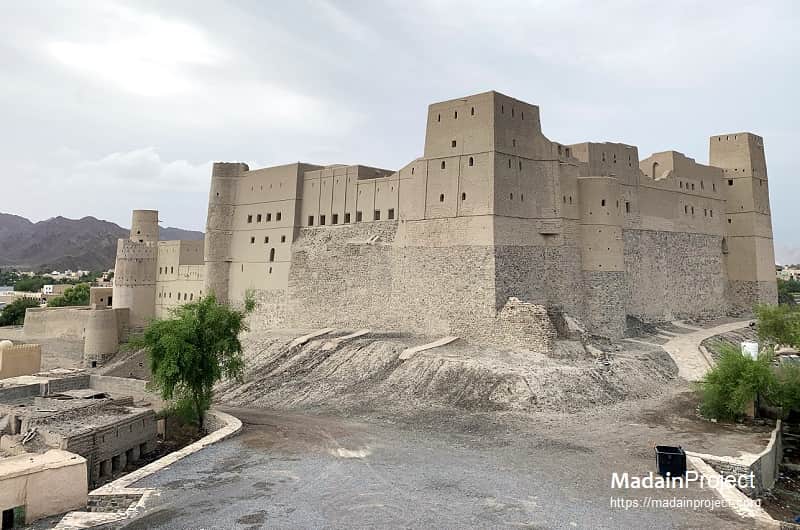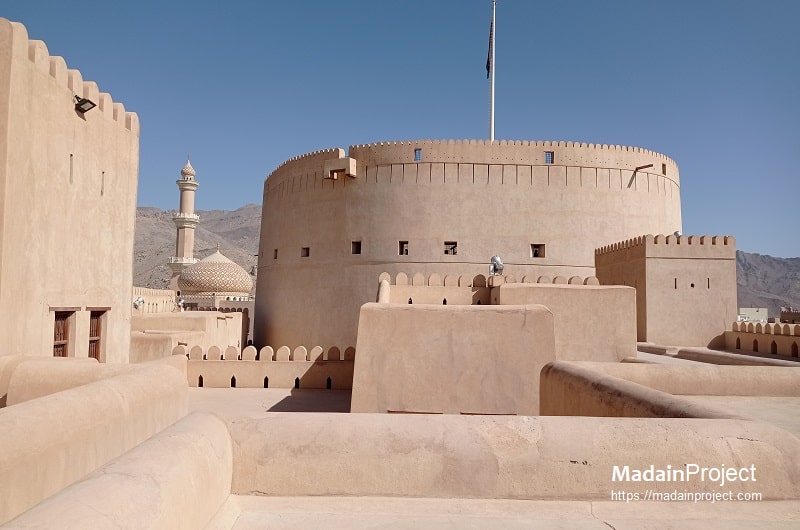Ancient Oman (عمان) officially the Sultanate of Oman (سلطنة عُمان), is an Arab country on the southeastern coast of the Arabian Peninsula in Western Asia. Recent excavations in the Dhofar Governorate more than 100 surface scatters of stone tools, belonging to a regionally specific African lithic industry—the late Nubian Complex—known previously only from the northeast and Horn of Africa, were found. This supports the proposition that early human populations moved from Africa into Arabia during the Late Pleistocene.
Back to Asia / Middle East / Ancient Arabia
Oman, located at the southeastern corner of the Arabian Peninsula, boasts a rich and diverse history that spans millennia. In ancient times, it was home to early human settlements, evidenced by archaeological discoveries dating back to the Stone Age. The region's strategic location along trade routes connecting Mesopotamia, the Indus Valley, and ancient Persia led to cultural exchanges and the establishment of Omani ports as vital hubs for maritime trade.
Oman embraced Islam quite early after its advent in the Arabia, becoming an influential center for Islamic scholarship and seafaring. The medieval era saw the rise of powerful Omani dynasties, such as the al-Julanda and the al-Ya'ariba, who expanded Omani influence across the Indian Ocean and East Africa. The city of Muscat emerged as a prominent trading post, fostering economic prosperity and cultural diversity.
In the sixteenth century, Oman faced Portuguese colonization attempts, leading to a period of conflict and resistance. Eventually, Omani forces successfully expelled the Portuguese, asserting Oman's independence and initiating the Sultanate's Golden Age. During this time, Oman became a major maritime power, establishing trade links with Southeast Asia, Africa, and the Arabian Gulf.
In the modern era, Oman experienced political reforms under Sultan Qaboos bin Said al-Said, who ruled from 1970 to 2020 CE. His leadership transformed Oman into a stable and prosperous nation, investing in education, infrastructure, and healthcare. Today, Oman stands as a harmonious blend of tradition and modernity, preserving its cultural heritage while embracing progress and openness to the world.

The oldest mention of the city of Ubar (Iram) was found in the Ebla tablets, dated from circa 2500 BCE to circa 2250 BCE. In November 1991 CE, the remains of a settlement were discovered in southern Oman which was hypothesized to be the legendary lost city destroyed mentioned in Quran. In 1992 CE Ranulph Fiennes wrote a book called Atlantis of the Sands about the expedition. The term Atlantis of the Sands had originally been coined by T. E. Lawrence. Read more

Khor Rori, also known as the ancient city of Sumhuram, is a significant archaeological site located in the Dhofar region of Oman. Situated at the mouth of the Wadi Darbat estuary, the fortified port city flourished from the 3rd century BCE until its abandonment around the 5th century CE. The site's strategic coastal position allowed it to serve as a crucial hub in the ancient world's frankincense trade, connecting South Arabia with Mesopotamia, Egypt, the Mediterranean, and India. Founded as an outpost for the Kingdom of Hadramawt, inscriptions found at the site confirm its role and link it to the later Himyarite kingdom. Read more

Ancient city of Qalhat served as a significant port on the shores of the Sea of Oman, positioned along the East Arabian Coast. This strategic location facilitated trade activities with regions such as the Persian Gulf and the Indian Ocean, establishing it as a crucial trade hub between India, East and South East Asia, and the Arabian Peninsula. Qalhat reached its peak between the 11th and 16th centuries CE under the rule of the Princes of Hormuz. Read more
The People of 'Ād (قوم عاد), according to tradition were Arab and lived in south of Arabia. They were descendants of 'Ad b. 'Aws who named their tribe after their forefather. They are mentioned in various Surah of the Qur’an, after the people of prophet Nuh (biblical Noah). Most of the narrative is mentioned in the Surah Hud. It is believed that the remains of an ancient city found by the amateur archaeologist Nicholas Clapp were those of the city mentioned in Quran. But there's no direct archaeological evidence to back up this hypothesis.

This impressive structure is situated on a rocky hill overlooking the Gulf of Oman and is part of a pair of forts, the other being al-Jalali Fort. Constructed during the Portuguese colonial era in the sixteenth century CE, al-Mirani Fort has played a significant role in Oman's rich maritime history. The fort has witnessed various historical events and has been an essential defensive stronghold for the city. Its strategic position atop a cliff provides panoramic views of the surrounding sea and the city of Muscat. Read more

al-Khutm Archaeological Site is a significant historical site located in Oman. Situated near the village of al-Khutm in the al-Dakhiliyah Governorate, this archaeological site dates back to the Bronze Age, specifically to the third millennium BCE. The site is renowned for its collection of beehive tombs, which are characteristic of ancient Omani burial practices. These tombs, constructed with stones and resembling beehives, are an architectural marvel and provide valuable insights into the ancient civilization that inhabited the area. Read more

Salut (صلوت) is an ancient archaeological site located near the Bisyah village (بسية) and close to Jabreen (جبرين) in the al-Dakhiliyah region of Oman. This site encompasses a collection of ancient ruins and fortifications, some of which trace back more than 3,000 years. These remnants provide valuable insights into the development of civilizations in the Arabian Peninsula during the Bronze and Iron ages. Read more
The People of 'Ād (قوم عاد), according to tradition were Arab and lived in south of Arabia. They were descendants of 'Ad b. 'Aws who named their tribe after their forefather. They are mentioned in various Surah of the Qur’an, after the people of prophet Nuh (biblical Noah). Most of the narrative is mentioned in the Surah Hud. It is believed that the remains of an ancient city found by the amateur archaeologist Nicholas Clapp were those of the city mentioned in Quran. But there's no direct archaeological evidence to back up this hypothesis.

Bahla Fort is a massive, adobe-built fortress located in the oasis settlement of Bahla, Oman, designated as a UNESCO World Heritage site since 1987. Constructed predominantly between the 12th and 15th centuries by the powerful Banu Nebhan tribe, who controlled the region and its crucial frankincense trade routes, the fort is one of the oldest and largest in the country. Its imposing earthen walls and towers are a prominent example of traditional Omani adobe architecture and a testament to the might of the Banu Nebhan dynasty. Read more

Nizwa Fort is a prominent 17th-century architectural and military monument in Oman, constructed during the reign of Imam Sultan bin Saif Al Ya'rubi (r. 1649–1679 CE). Located in the strategically significant interior city of Nizwa, the fort's main feature is a massive, cylindrical tower, constructed atop an earlier 12th-century structure. Its design is a testament to the sophistication of Omani military architecture during the Ya'rubi era, a period marked by the expulsion of the Portuguese and the consolidation of Omani power. Read more
Signup for our monthly newsletter / online magazine.
No spam, we promise.